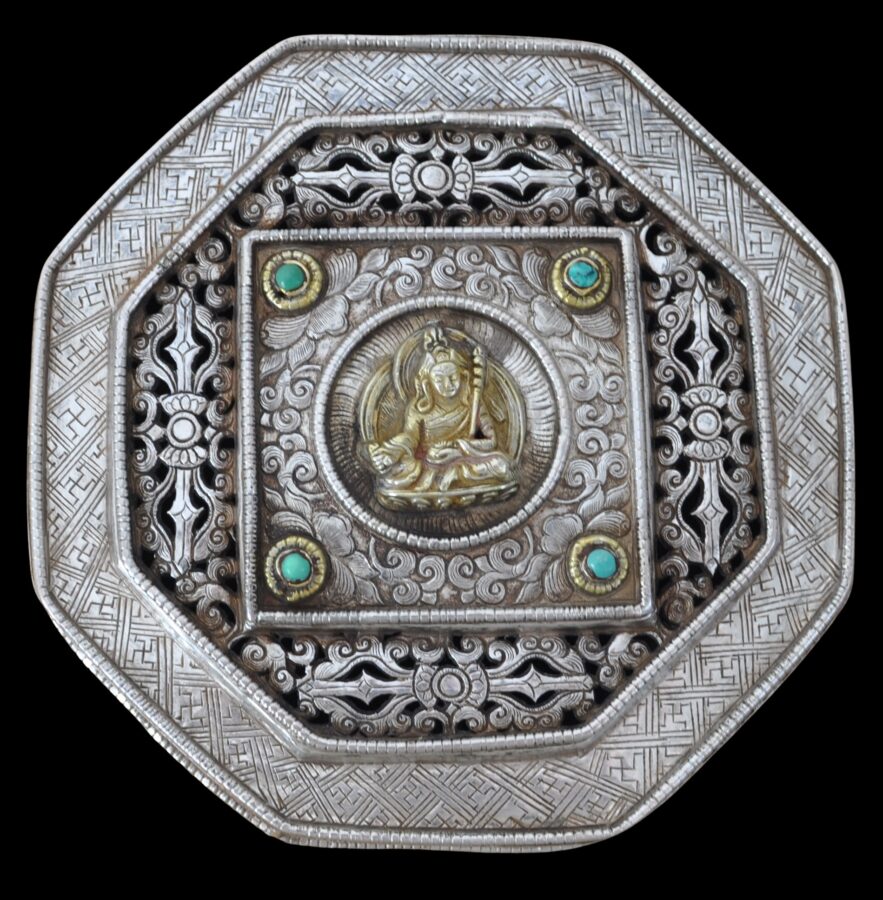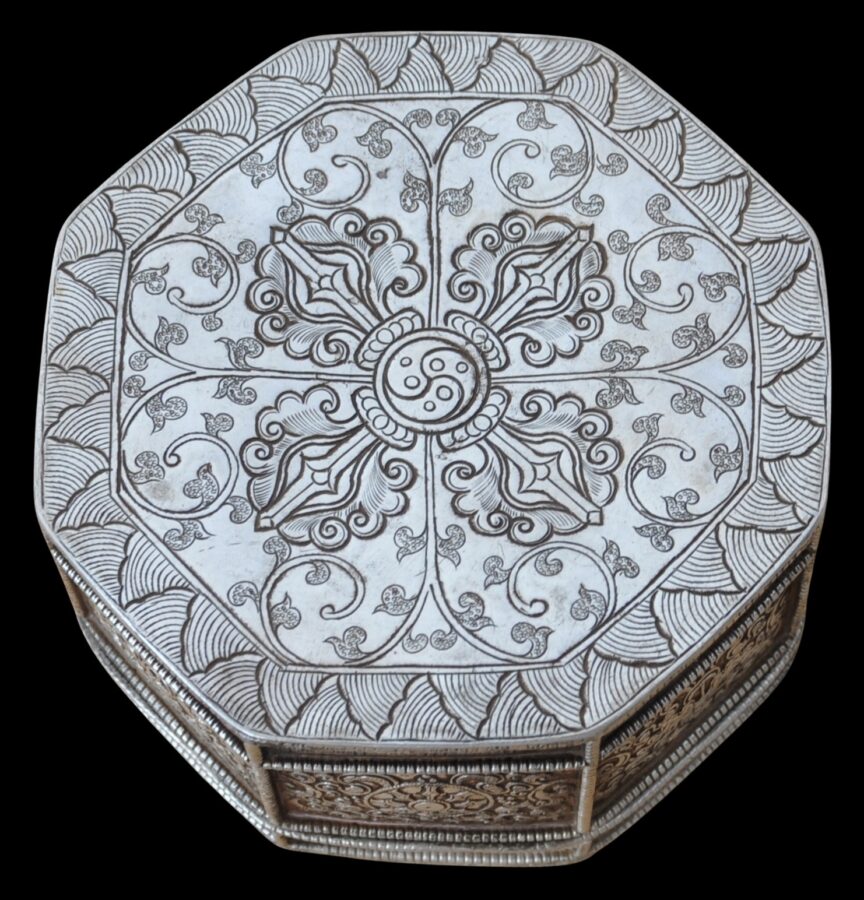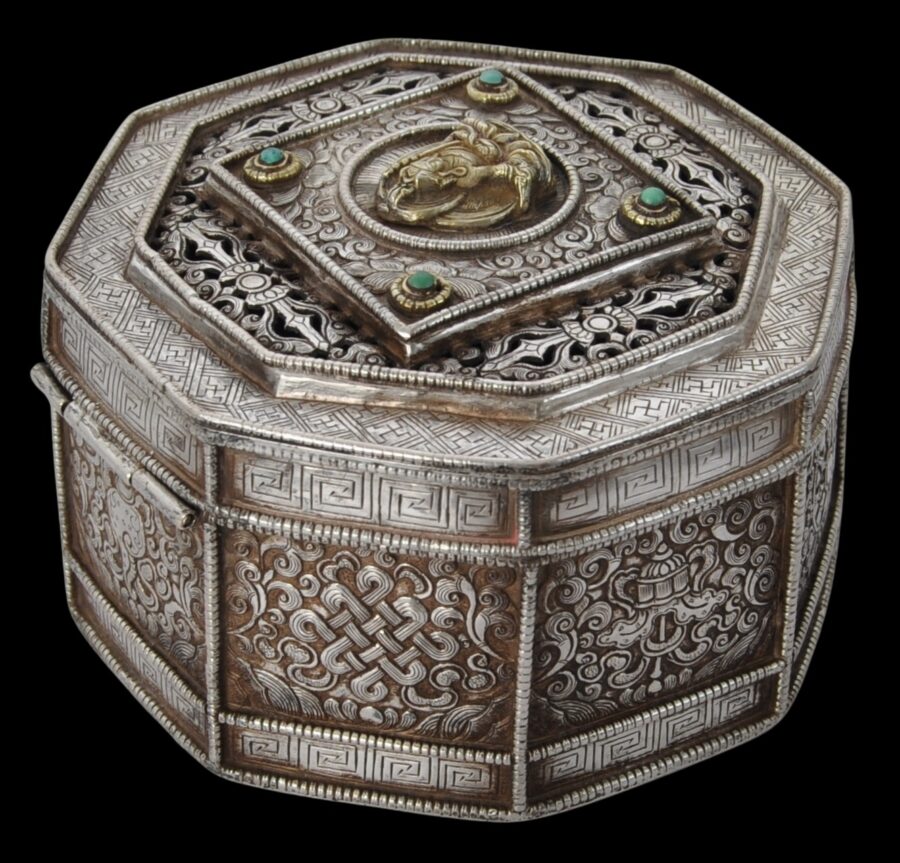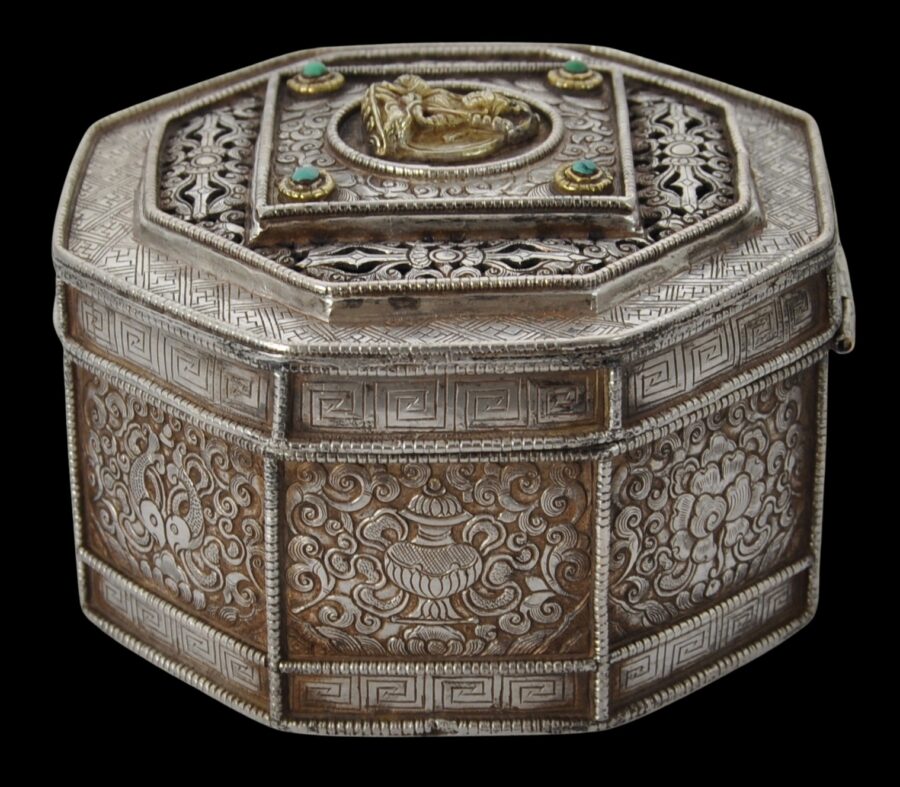Enquiry about object: 9203
Sikkim Parcel-Gilt Silver Octagonal Box
Gangtok, Sikkim, Himalayan India 18th-19th century
height: 7.7cm, width: 11.6cm, weight: 420g
Provenance
private collection, UK
This unusual eight sided box with a hinged, pierced lid, is from Sikkim, formerly a Himalayan kingdom, and now an Indian state.
The lid is decorated in high relief with a gilded figure of the Buddhist saint Padmasambhava within a roundel which is itself in a square decorated in each corner with a turquoise cabochon in a raised gilded setting, and engraved with leafy scrolls. This is then surrounded by a raised and pierced eight-sided frame decorated with four vajras amid more scrollwork that is pierced. A border engraved with a Chinese-style key-fret pattern then surround this.
Each of the eight sides of the box is chased with one of each of the Astamangala of the Eight Precious Signs, within key-fret borders.
The vase is elaborately engraved with a double vajra surrounded by scrollwork, and then finally a border of triangle motifs.
Padmasambhava is represented seated on a lotus asana with his legs crossed. He holds a vajra in his right hand. A patra (or alms bowl) lies in his lap. And resting against his left arm is a lobed staff or khatvanga.
Padmasambhava is a popular figure in Sikkim and is said to have passed through the territory in the 8th century on his way to Tibet, blessing Sikkim and introducing it to Buddhism. Consequently, Padmasambhava is a popular deity in the arts of Sikkim.
Padmasambhava was a renowned tantric ascetic in 8th century northern India. He was born in the Swat Valley in what is northwestern Pakistan today. Tri-Sron Detsan, the then Tibetan ruler, invited Padmasambhava to come from India to Tibet where he remained for around fifty years establishing monasteries in the tantric tradition. He is said to have subdued all malignant gods in Tibet and if they agreed to follow Buddhism and become defenders of the doctrine, he promised to have them included in the Mahayana Buddhist pantheon. At the end of his time in Tibet, Padmasambhava mysteriously disappeared. Some legends have it that he left Tibet riding through the clouds on a winged horse.
The box is in very fine condition. It is not clear if the box had a specific purpose though the religious iconography suggests a ritual or ceremonial purpose.
References
Ghose, M. (ed.), Vanishing Beauty: Asian Jewelry and Ritual Objects from the Barbara and David Kipper Collection, Art Institute of Chicago, 2016.
Lama, M.N., Ritual Objects & Deities: An Iconography on Buddhism & Hinduism, Lama Art, 2003.
Sakya, Jnan Bahadur, Short Description of Gods, Goddesses and Ritual Objects of Buddhism and Hinduism in Nepal, Handicraft Association of Nepal, 2000.











